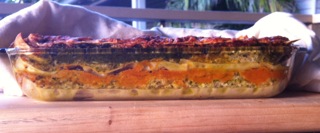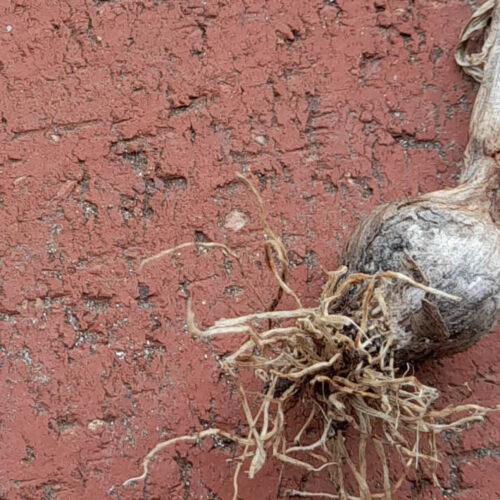What to do with too many organic pumpkins
2011-06-29T01:39:39+10:00
Pumpkins are one of those easy-grow organic crops that are incredibly prolific. PHIL DUDMAN shares his tips for storing your excess along with a warming pumpkin recipe for winter.
Pumpkins can be grown all year round in tropical and sub-tropical gardens, but are spring/summer grown for most parts of the country, with crops ready to harvest in autumn. Most pumpkins store well for months over winter– the best varieties are the hard-skinned types like Qld Blue, Jarrahdale and Sweet Grey – but when you provide the right conditions, you can keep any pumpkin for months without deterioration.
Harvesting
It’s always best to leave pumpkins on the vine to fully ripen – wait until the vine starts to die back before harvesting – but pick before serious frosty weather begins because it can damage the skins. It’s important to keep a long piece of stem on the fruit when you pick – without it, the attachment point on the pumpkin is an entry point for fungi and bacteria, which will cause the flesh to rot quite rapidly. For that reason, never carry your pumpkins by the stalk either for risk of it breaking off and always move them around with care to avoid scratches and bruises. If damage does occur, seal the wounds with melted candle wax. Before storing, leave the fruit out in full sun – dry, and elevated – for a few weeks to help harden the skins, but move them inside if there’s rain about.
Storing
Find a cool, dry, well-ventilated spot for storing with temperatures around 10-15°C – somewhere dark under the house is good. Keep them up off the ground and space them to increase airflow around the fruit and place them on their sides to avoid moisture building up around the base of the stems. It’s a good idea to sit them on newspaper or straw to help absorb any damaging moisture that may develop on the skin. Some people wipe the skins with organic vegetable oil to create a protective water repellant layer.
Cooking and preserving
There are lots of ways to enjoy pumpkin in the kitchen – in soups and stews, roasted, mashed, and added to scones and pies. You can also freeze, dry and pickle it. Recently, I set my Foodie buddy Julie Ray the task of coming up with a cozy comfort pumpkin recipe for winter, which included some other fresh seasonal organic ingredients from my garden. Julie came up with a scrumptious Pumpkin and Spinach Lasagne and prepared it live to air on ABC’s Good Gardening program for Graham Stuart and I to enjoy. Yummo!






